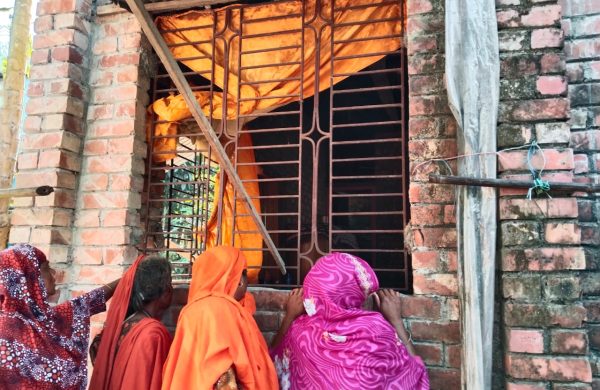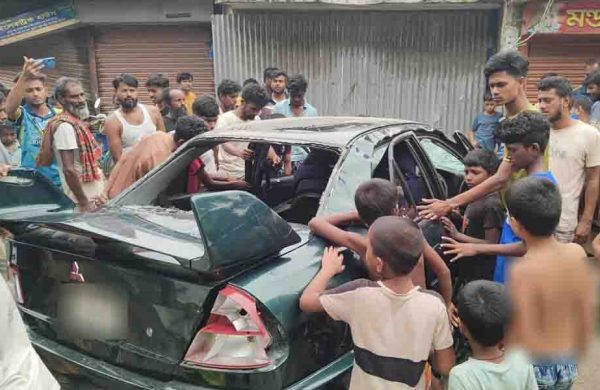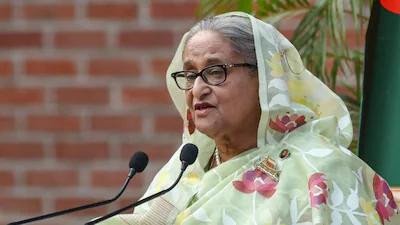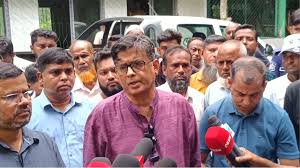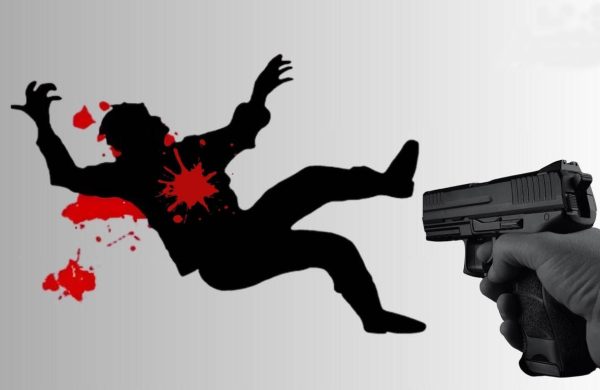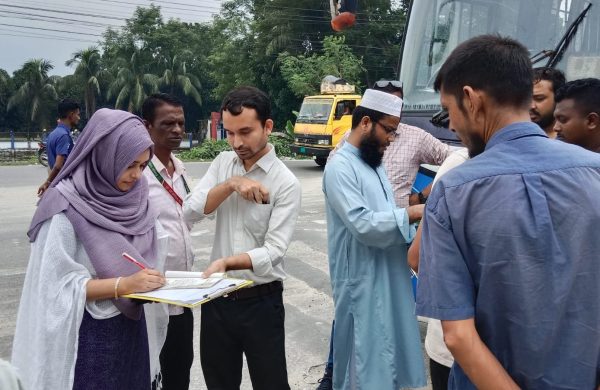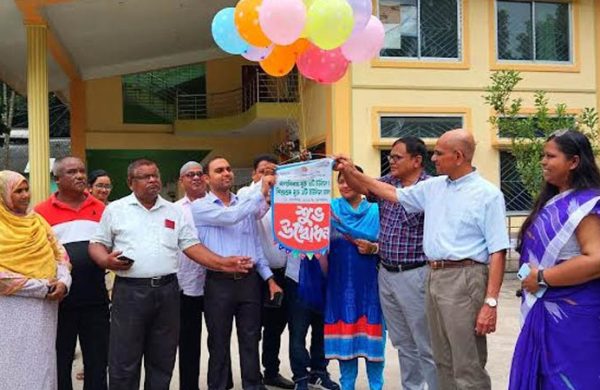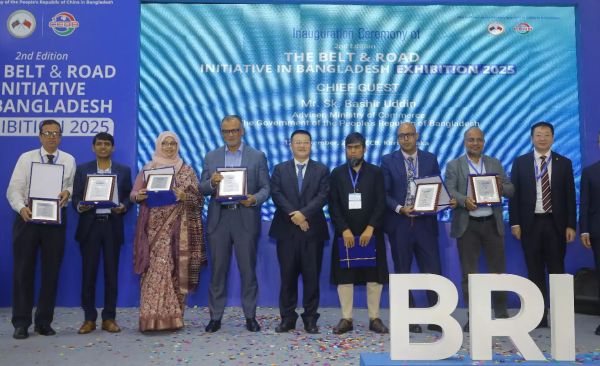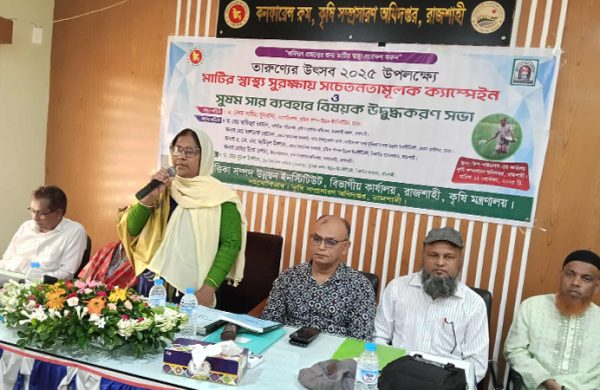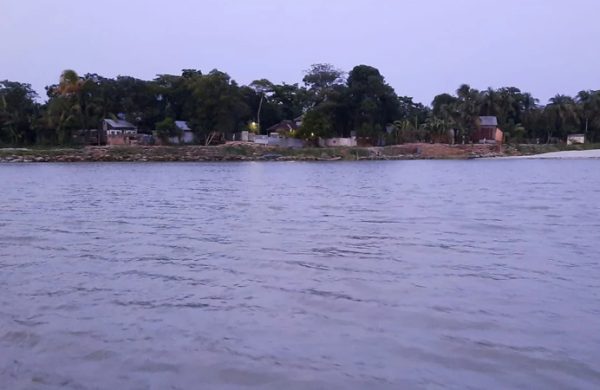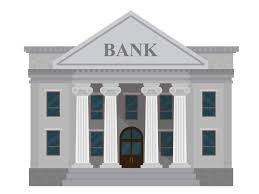2024, breaking free from autocracy
- Update Time : Tuesday, December 31, 2024
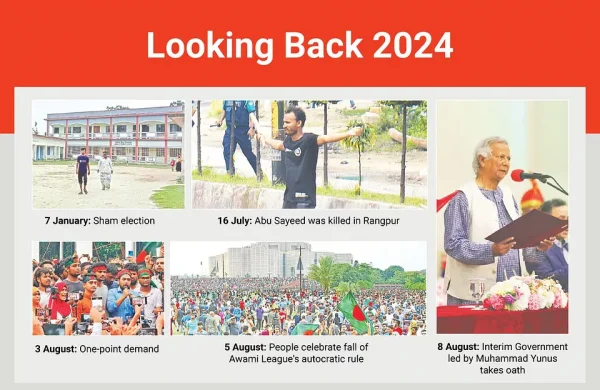
TDS Desk
The Anti-Discrimination Student Movement was at its peak. Police unleashed frisky shooting to suppress the movement and the pile of bodies of students and mass people was mounting. Amidst all these, Sheikh Hasina addressed a meeting with businessmen at her office where she said, “Rumours have been spread during the movement that Sheikh Hasina has fled. But I want to tell them that Sheikh Hasina has not fled, Sheikh Hasina does not flee.”
Sheikh Hasina made the remark on 22 July. Within 13 days she fled to India, ending her reign of repression of 15 years.
The year 2024 started with the twelfth national election. It was another sham election like the previous two. Although the outcomes of the three elections were the same, the mechanism was different. The election in 2014 was one-sided where more than half constituencies were won without voting. The 2018 general election was more faulty which earned the epithet of ‘night election’. The last one in this year was a ‘dummy election’. Awami League fielded its ‘dummy’ candidates to give the election, marred by the boycott of BNP and several other political parties, a competitive look. Awami League and dummy Awami League (who contested as independent candidates) shared 280 seats. In the run up to that election, opposition leaders and activists were cornered by attacks, arrests and lawsuits.
After usurping power for the fourth consecutive term, Sheikh Hasina did not face any major challenges except for the economic crisis till July. 2024 was a year of grave economic crisis emanating from years of looting from different sectors including banking sector, money laundering, foreign reserve crisis and different other factors. People are pushed to the corner due to skyrocketing prices of essentials from the beginning of the year. To rub salt in wounds, oligarchs close to the government withdrew huge amounts of money from the banks before and after the election. The economy of the country is still reeling from these crimes committed in the financial sector and foreign debt.
BLOOD-SOAKED JULY
On 5 June, the High Court declared a gazette notification published in 2018 cancelling the quota system in government jobs. That court order reinstated the quota system. Students held protests in different parts of the country on the following day, 6 June, and set the government an ultimatum till 30 June. Students Against Discrimination (SAD) rolled out a series of programmes from 1 July, which culminated in a student-mass uprising.
The movement started to snowball in mid-July. The then government used different stratagems to quell the protests. The movement got a new turn over a remark of Sheikh Hasina made on 14 July on her state visit in China. Replying to a question, Sheikh Hasina said, “If the grandchildren of the freedom fighters don’t get quota benefits, should the grandchildren of Razakars get the benefit?”
This comment disparaging the demand of protesting students added fuel to the fire. Students erupted in protests. Students came out from residential halls of Dhaka University in droves at night protesting Sheikh Hasina’s comment. The following day, the students again started protesting and Awami League’s student organisation Chhatra League attacked them. Chhatra League (now a banned outfit) brought to the campus outsiders and launched a heinous attack on the female students of DU. Later the intelligence agency picked up coordinators, tortured them and tried to intimidate them to call off the movement.
An activist of Bangladesh Chhatra League assaults two students, who join the quota reform movement, on Dhaka University campus on 15 July 2024.
Protests erupted across the country the day after the Chhatra League attacked protesters on 15 July. Police began shooting the protesters from 16 July. On that day, students clashed with the police and Chhatra League in the Science Lab and New Market areas of Dhaka. Two people died there. However, the death of Abu Sayeed in Rangpur that day turned the tide of the movement. Abu Sayeed, a student of Begum Rokeya University, stood valiantly with his arms wide open in front of the police firing. He was sprayed with bullets. The movement intensified when the video of the incident was spread on social media and the media.
Alongside the police, armed activists of the Awami League were deployed to suppress the movement. The government imposed a curfew on 19 July. On that day, Awami League general secretary Obaidul Quader announced that the order to ‘shoot at sight’ had been issued.
Earlier on 17 July, Dhaka University and its residential halls were shut. Then came the students of private universities alongside the public universities. People from all walks of life, from students of schools, colleges and madrasas to the working class, took to streets in almost every area of Dhaka city and elsewhere.
Teachers, guardians and citizens expressed solidarity with the protesters. Activists of opposition political parties also joined the movement. It quickly turned into a mass movement.
The government at one stage imposed a curfew and shut the internet. Huge number of police, BGB, RAB and Army men were deployed across the country to suppress the movement. Indiscriminate police firing helped the movement spread to district and upazila levels. Law enforcers indiscriminately shoot unarmed protesters. Police and hospital authorities were hiding the information on death tolls.
Jatrabari, Rampura-Badda, Uttara, Science Lab, Mohammadpur, Mirpur and Mohakhali areas in the capital turned into battlefields. Even helicopters were used to quell the protests. Even women and children who were staying at their rooms, verandah and rooftops were hit by bullets fired indiscriminately. With the pile of corpses being heavier, the head of government was busy visiting different establishments damaged during protests and portraying it as an effort to stymie the country’s development trajectory.
The question came to the fore as to what is more valuable– properties or human lives. A few media outlets, including Prothom Alo, took the risk and began publishing news of death and injured people in hospitals. At one point, the then prime minister, the dictator Sheikh Hasina, was forced to visit the injured in one or two hospitals.
A few days before the fall, the Awami League unleashed its armed cadres with fresh vigor across the country. They joined law enforcers in shooting unarmed protesters indiscriminately. At that time, a video of the speech of the deputy commissioner of Dhaka’s Wari division of the police went viral on social media. It shows the officer showing a video of the movement and telling the then home minister, “We shoot one, only one dies. The others don’t move.”
As a last ditch effort, Sheikh Hasina tried to cling to power by confronting the Army with the protesting students and masses. The Army men declined to shoot the protesters. Retired officials of the Armed Forces also took a stance in favor of the protesters. They issued statements, even brought out processions.
Thousands of students and demonstrators gathered at the central Shaheed Minar on the Dhaka University campus on 3 August, 2024.
The Students Against Discrimination announced a one-point demand of the government’s resignation from a rally at Central Shaheed Minar on 3 August and declared a non-cooperation movement the following day. On 4 August, Awami League leaders and activists joined law enforcers in launching a heinous attack on protesters across the country. They killed over a hundred people on that single day. Amid such unprecedented turmoil, an announcement came that the ‘March to Dhaka’ of protesters will be held on 5 August instead of 6 August.
MARCH TO GANABHABAN AND FLEEING
Hundreds of thousands of people poured onto the streets of Dhaka and elsewhere from the morning of 5 August. Huge processions of people marched towards Dhaka from Gazipur-Uttara areas. More processions from Jatrabari-Sayedabad and Shahbagh areas streamed in, turning the Dhaka streets a sea of humans. All roads led to Ganabhaban, residence of prime minister, national parliament.
Before this wave of people reached Gana Bhaban, Sheikh Hasina left the country with her younger sister Sheikh Rehana on a military plane. After that, the angry crowd entered the prime minister’s official residence, Ganabhaban, and the parliament building and vandalised them.
Anti-government protestors display Bangladesh’s national flag as they storm Prime Minister Sheikh Hasina’s palace in Dhaka on 5 August 2024
Anti-government protestors display Bangladesh’s national flag as they storm Prime Minister Sheikh Hasina’s palace in Dhaka on 5 August 2024AFP
Sheikh Hasina had been in power for the longest period at a stretch in the history of Bangladesh. And also, she created the history of fleeing the country after being overthrown. After Sheikh Hasina’s fall, all leaders of Awami League, of central committee to grassroot committees, ministers-state ministers, her obedient government officials, businessmen close to her and other professionals went into hiding in droves to dodge the public wrath. Many crossed the border to flee to India. Some were also arrested later. Angry mob torched police stations, vehicles and different establishments in different areas. Many police members were beaten to death. From Inspector General of Police to constable, all went into hiding.
The complete account of the number of martyrs in student-people mass uprising is yet to be available. A special cell on mass uprising on 21 December said it has gleaned information of death of 858 and injury of 11,500 till then.
VESTIGES OF REPRESSION COME OUT
The floodgates of Sheikh Hasina regime’s repression were opened following her government’s ouster. One of the telltale vestiges of that repression was a secret detention center known as ‘Aynaghar’, where detainees were kept confined for days to years. After 5 August, Brigadier General (retd) Abdullahil Aman Azmi, Mir Kashem Ali’s (who was hanged to death) son barrister Ahmed Bin Kashem, UPDF leader Michael Chakma who were detained from five to eight years.
An interim report by the commission on inquiry of enforced disappearances submitted to the government said Sheikh Hasina was the main instructor of the enforced disappearance. Many victims of enforced disappearance are still missing. The commission thinks the possibility is slim that they are still alive.
COUNTRY OF THE YEAR AND NEW CHAPTER IN POLITICS
Prestigious British magazine The Economist awarded Bangladesh as the ‘Country of the Year’ for 2024 for toppling an autocratic regime in an unprecedented student-led mass uprising.
BNP, Jamaat-e-Islami and other political parties that were under pressure for the last 15 years are now enjoying freedom to observe political activities. However, a division has emerged among the political parties, government and leaders of the movement in question as to whether the reforms to be carried out before or after the next general elections. This gulf is becoming more visible. Meanwhile, Students Against Discrimination that led the country in ouster of a longstanding autocratic regime, has emerged as an important factor in the politics. It has formed the Jatiya Nagorik Committee and announced committees in over a hundred thanas. The process to launch a new political party by this organisation is ongoing.
SENTENCED TO JAIL TO ‘SURPRISINGLY REVERSE SCENARIO’
The year 2024 began with the imprisonment of Nobel Peace Prize-winning economist Professor Muhammad Yunus. After years of harassment, Muhammad Yunus was sentenced to six months in prison by the Labour Court on the first day of the year in a case filed by the Department of Inspection for Factories and Establishments. However, this harassing case by the Sheikh Hasina government did not hold water.
In the middle of the year, Sheikh Hasina’s dictatorship ended in a student uprising. Then, on 8 August, an interim government was formed under the leadership of Muhammad Yunus. He took this responsibility at the special request of the students who led the mass uprising. And Sheikh Hasina, who wanted to put him in jail, has taken refuge in India.
Dr Yunus in an interview in the first week of October remembered the surprising turn of events. He said, “I had been going from court to court. Then all of a sudden, instead of going to jail I was taking an oath in Bangabhaban. Quite a surprisingly reverse scenario.”
Not only that, the new government has launched an initiative of trial of July killings in the International Crimes Tribunal. The ICT has already issued arrest warrants against 46 people including Sheikh Hasina. The interim government is now trying to extradite her from India.
Professor Anu Muhammad, member of Ganatantrik Odhikar Committee launched after the mass uprising, thinks that the year 2024 has set an example not only for Bangladesh, but also for the whole world. He told this correspondentthat massive corruption, looting and reign of repression created a pent up anger in people’s minds. The most important lesson here is that an autocratic government, no matter how powerful it is, cannot sustain if aggrieved people from all walks of life come out protesting. The people’s aspiration now is to implement the public desire and dream created by the spontaneous uprising. This aspiration cannot be ignored. (Reports Prothom Alo)


